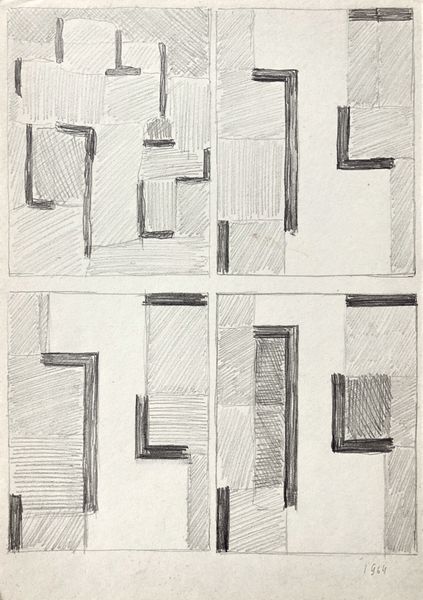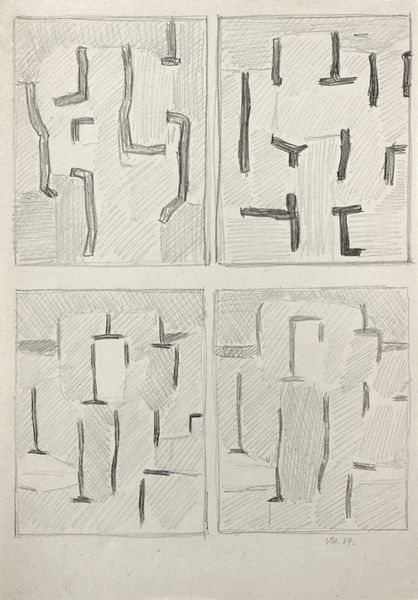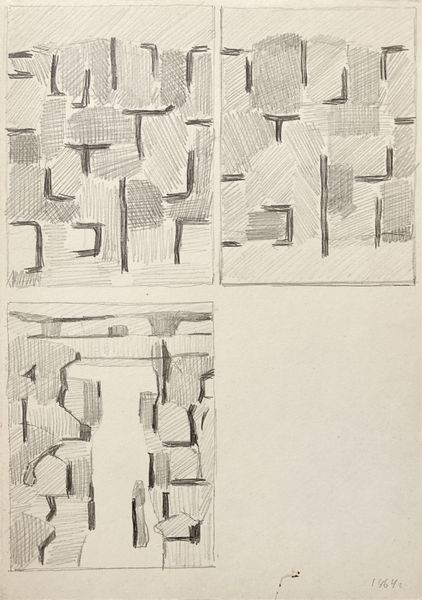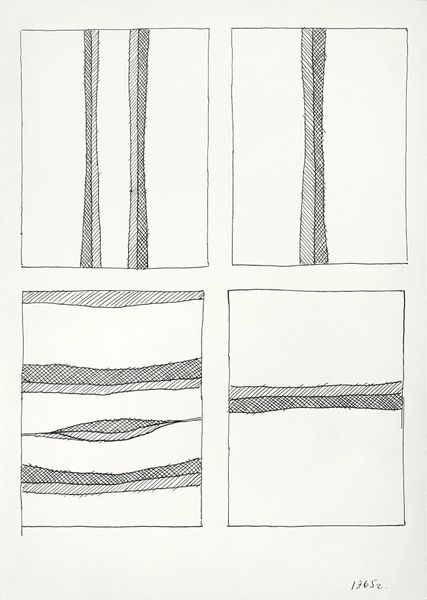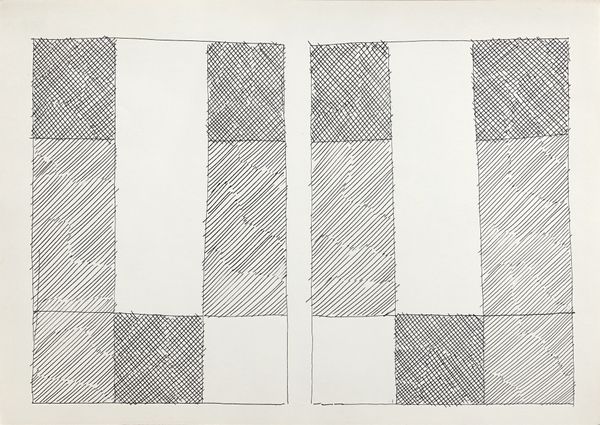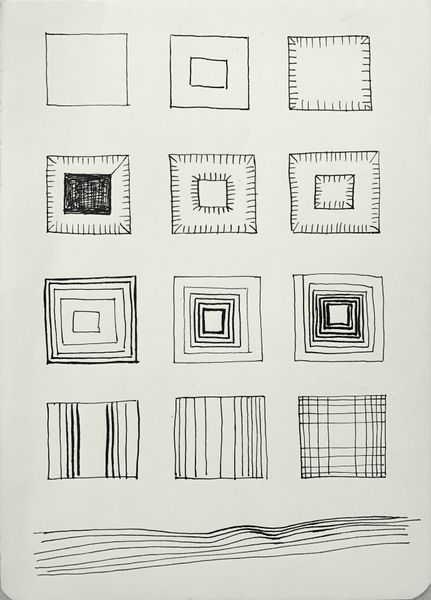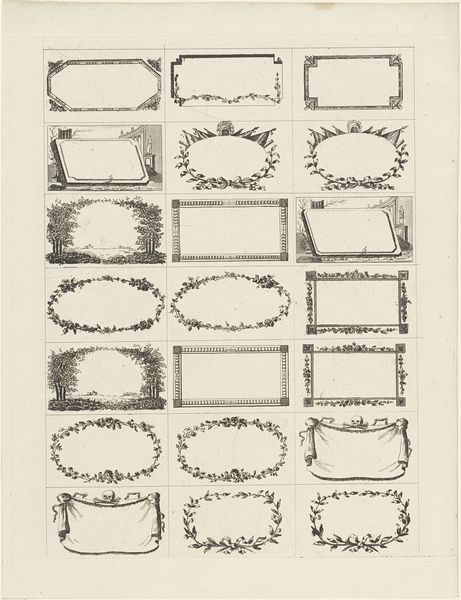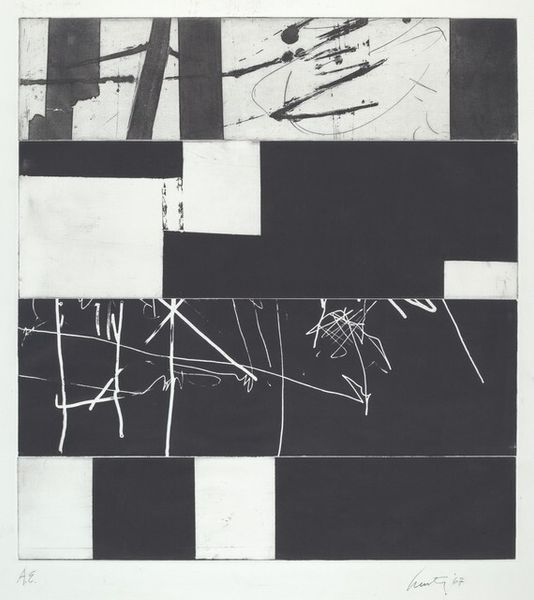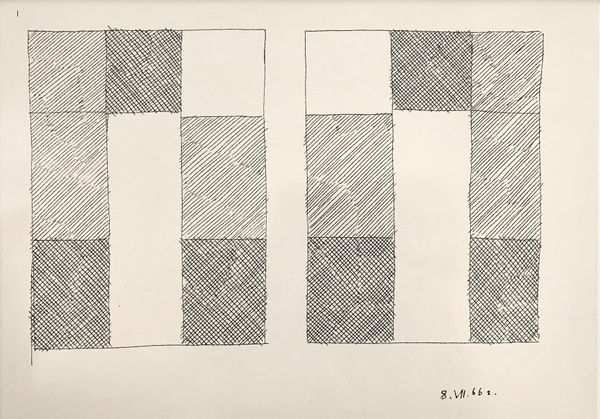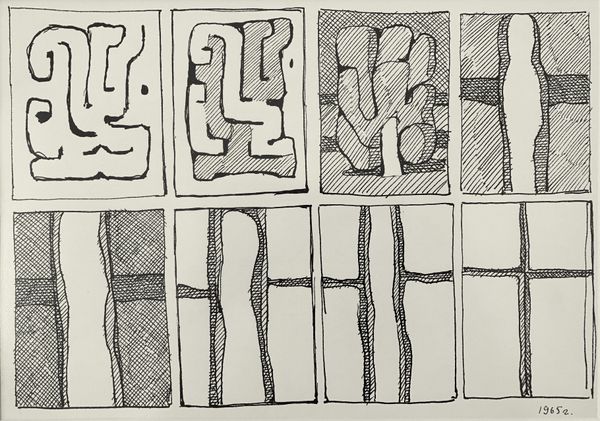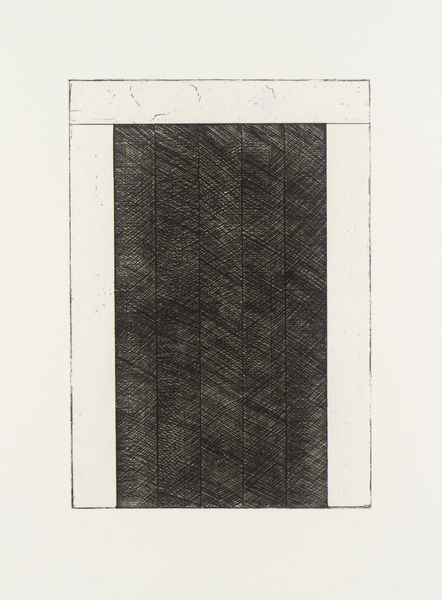
drawing, graphite
#
drawing
#
geometric
#
abstraction
#
line
#
graphite
Copyright: Hryhorii Havrylenko,Fair Use
Curator: Hryhorii Havrylenko’s “Sketch of Four Compositions,” created in 1964 using graphite on paper, immediately strikes me as an exploration of fundamental shapes. What is your first impression of this intriguing drawing? Editor: I find them almost architectural, like floor plans for a modernist utopia or perhaps stark symbols etched in an unknown code. I can see patterns emerging from seemingly simple geometric forms. Curator: It is tempting to interpret these seemingly innocuous geometric figures through the prism of power dynamics. I am drawn to the way it engages with the history of suprematism in post-Stalinist Ukraine. While overtly non-representational, the work exists in dialogue with sanctioned Soviet Socialist Realism. It represents a subtle form of resistance against the suppression of artistic innovation. Editor: You know, the arrangement in four panels evokes a sense of story telling to me, but where is the narrative leading us? There's almost a primal simplicity to these shapes that pull from early human symbolic language. Does this have resonance within Ukrainian visual traditions? Curator: Indeed. Geometric abstraction, though condemned during the height of Stalinism, possessed deep roots in the Ukrainian avant-garde and the legacy of artists like Kazimir Malevich. It is likely a conscious recuperation and subversion. Even though it appears like pure, formal investigation, in reality, such experimentation carried significant political and ideological weight during the Soviet era. Editor: That adds layers, doesn’t it? It's almost as though Havrylenko took refuge in abstract symbols to critique societal order—symbols which, ironically, have found ways into mass culture globally. Curator: Absolutely. Within these elementary lines, shades, and shapes we observe echoes of the battle between imposed conformity and freedom of expression that characterized Soviet Ukrainian art of the 1960s. Editor: It's interesting how a sketch can hold such weighty considerations of art history and socio-political contexts. I find myself re-evaluating my first impression of these as innocent geometrical musings! Curator: This piece reminds us that art—especially abstract art—is never devoid of ideology and, through its visual language, can engage with broader struggles for liberation. Editor: And I find my eyes newly trained, to seek beyond shape and consider symbols anew as cultural carriers. Thank you for enriching my vision.
Comments
No comments
Be the first to comment and join the conversation on the ultimate creative platform.
